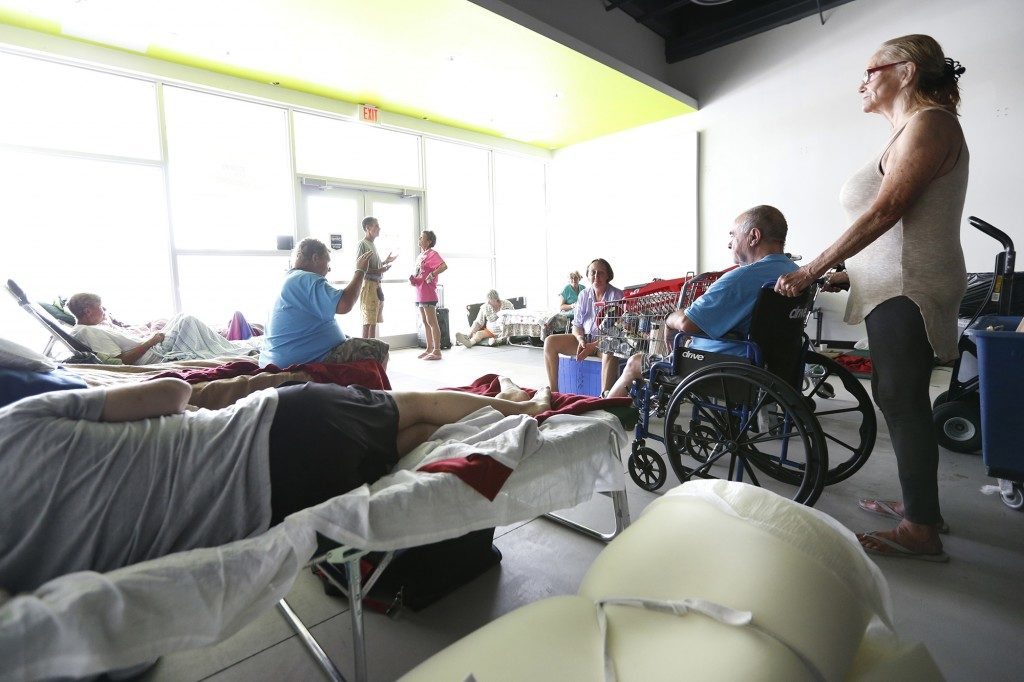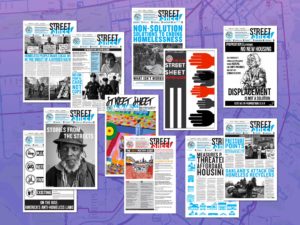
Hurricanes Irma and Harvey delivered a devastating one-two punch to Texas and Florida, forcing millions to evacuate and leaving thousands displaced. Now, as emergency responders try to help hurricane victims cope with the aftermath of the storm, previously homeless residents are taking a particularly hard hit.
In Florida, as officials rushed to open emergency shelters for those forced from their homes by Irma, some residents who had been homeless before the hurricane were forced to wear bright yellow bracelets to mark their status. In St. Augustine, previously homeless people reported that they were not only forced to wear wristbands, but that authorities warned newly homeless hurricane victims to stay away from people with the yellow bracelets because they were criminals, thieves, and drug users. One woman described her experience to a local service provider this way: “They treated me like I was non-human, insulted me and others … [They] separated us from other people.”
In New Smyrna Beach, Florida, a community volunteer said that previously homeless people—including some in wheelchairs—were turned away from hurricane shelters and later directed to the Volusia County Fairgrounds, which served as a segregated shelter for pre-hurricane homeless people. A homeless man in Daytona Beach said, “[We] were treated like animals … like we got a disease or something.”
The unequal treatment of “pre-hurricane homeless” people versus “hurricane homeless” people was not unique to Florida. One Houston service provider told me, “There was definitely a treatment of people who had been homeless prior to the storm that was different … [they were] told that they needed to go to agencies that are part of the city homeless service system, rather than receive services within the [hurricane] shelter.” They were then de-prioritized for assistance too, as a spokeswoman for the Federal Emergency Management Agency wrote in an email to Reuters: “If an individual was homeless pre-disaster, they may not be considered for Housing Assistance and Other Needs Assistance, which both require successful verification of pre-disaster occupancy.”
The reality is, none of the people who were homeless before the storms were living “pre-disaster” lives. Before the hurricanes struck, they had already fallen victim to more routine disasters: a lost job, eviction, health crisis, domestic violence, untreated addiction, or mental illness. Any of these can lead to homelessness because of the manmade disaster that is the biggest driving cause of homelessness today: the crisis in affordable housing.
After decades of cuts to federal housing programs—which shrank as a share of gross domestic product by 30 percent between 1996 and 2016—only 1 in 4 of those who are poor enough to qualify for housing assistance currently receive it. At the same time, as many cities experience luxury development booms, lower-income people are being displaced from the private housing market. As inequality deepens, poorer Americans must crash with families and friends, live in their cars, seek refuge in emergency shelters, or try to survive on the streets.
For those living in public, there is also the risk of being fined, arrested, and even jailed. Increasingly, cities across the country are passing and enforcing laws that make it a crime to sit, sleep, and even eat in public places. Over the past ten years, such laws have increased dramatically the throughout country—including in some of the same cities that rushed to the aid of hurricane victims.
In Houston, some 6,000 people were homeless pre-Harvey, and emergency shelters had long been full. But instead of helping homeless residents, the city passed a new law just before the storm making it a crime to sleep on the street—punishable by fine, arrest, and incarceration.
The slew of storms will now worsen the already tight housing market—the destruction of millions of properties will increase demand and drive rents higher. This will likely hit low-income people particularly hard, since they are more likely to live in flood-prone areas or in shoddy, unsafe housing, making their residences particularly vulnerable to ruin. Not surprisingly, these disasters disproportionately affect people of color, who are not only more likely to be poor, but also more likely to be homeless. Those unable to receive housing assistance will be left to fight for space in overflowing emergency shelters or to live on the streets.
People often come together with generosity in the face of natural disasters, as they can remind us that we are all vulnerable to nature. But as Harvey, Irma, Jose, and now Maria have shown, the reality is that some of us are both more vulnerable and more likely to be excluded from help and human decency.
A coalition of organizations is now advocating for new policies to ensure a fair and just recovery—and to prevent those who are most vulnerable from being stigmatized, excluded, and tagged with special bracelets during future natural disasters. Responses to natural disasters must be equitable, both during and after the crisis. They must recognize the needs—and humanity—of those made homeless by natural disasters and those made homeless by manmade disasters. ≠
This article was first published on Talk Poverty and produced in collaboration with the Economic Hardship Reporting Project.

